The NVIDIA GeForce GTX 780 Ti Review
by Ryan Smith on November 7, 2013 9:01 AM ESTHands On With NVIDIA's Shadowplay
Though it’s technically not part of the GeForce GTX 780 Ti launch, before diving into our typical collection of benchmarks we wanted to spend a bit of time looking at NVIDIA’s recently released Shadowplay utility.
Shadowplay was coincidentally enough first announced back at the launch of the GTX 780. Its designed purpose was to offer advanced game recording capabilities beyond what traditional tools like FRAPS could offer by leveraging NVIDIA image capture and video encode hardware. In doing so, Shadowplay would be able to offer similar capabilities with much less overhead, all the while also being able to utilize the NVENC hardware H.264 encoder to encode to space efficient H.264 rather than the bulky uncompressed formats traditional tools offer.
With Shadowplay and NVIDIA’s SHIELD streaming capabilities sharing so much of the underlying technology, the original plan was to launch Shadowplay in beta form shortly after SHIELD launched, however Shadowplay ended up being delayed, ultimately not getting its beta release until last week (October 28th). NVIDIA has never offered a full accounting for the delay, but one of the most significant reasons was because they were unsatisfied with their original video container choice, M2TS. M2TS containers, though industry standard and well suited for this use, have limited compatibility, with Windows Media Player in particular being a thorn in NVIDIA’s side. As such NVIDIA held back Shadowplay in order to convert it over to using MP4 containers, which have a very high compatibility rate at the cost of requiring some additional work on NVIDIA’s part.
In any case with the container issue resolved Shadowplay is finally out in beta, giving us our first chance to try out NVIDIA’s game recording utility. To that end while clearly still a beta and in need of further polishing and some feature refinements, at its most basic level we’ve come away impressed with Shadowplay, with NVIDIA having delivered on all of their earlier core promises for the utility
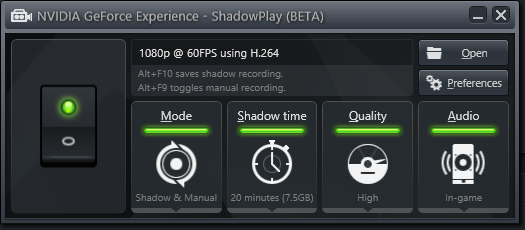
With regards to functionality, all of Shadowplay’s basic functionality is in. The utility offers two recording modes: a manual mode and a shadow mode, the former being self-explanatory while the latter being an always-active rolling buffer of up to 20 minutes that allows saving the buffer after the fact in a DVR-like fashion. Saving the shadow buffer causes the entirety of the buffer to be saved and a new buffer started, while manual mode can be started and stopped as desired.
| Shadowplay Average Bitrates | |||
| High Quality | 52Mbps | ||
| Medium Quality |
23Mbps
|
||
| Low Quality |
16Mbps
|
||
Next to being able to control the size of the shadow buffer, Shadowplay’s other piece of significant flexibility comes through the ability to set the quality (and therefore file size) of the recordings Shadowplay generates. Since Shadowplay uses lossy H.264 the recording bitrates will scale with the quality, with Shadowplay offering 3 quality levels: high (52Mbps), medium (23Mbps), and low (16Mbps). Choosing between the quality levels will depend on the quality needed and what the recording is intended for, due to the large difference in quality and size. High quality is as close as Shadowplay gets to transparent compression, and with its large file sizes is best suited for further processing/transcoding. Otherwise Medium and Low are low enough bitrates that they’re reasonably suitable for distribution as-is, however there is a distinct quality tradeoff in using these modes.
Moving on, at this moment while Shadowplay offers a range of quality settings for recording it only offers a single resolution and framerate: 1080p at 60fps. Neither the frame rate nor the resolution is currently adjustable, so whenever you record and despite the resolution you record from, it will be resized to 1920x1080 and recorded at 60fps. This unfortunately is an aspect-ratio unaware resize too, so even non-16:9 resolutions such as 1920x1200 or 2560x1600 will be resized to 1080p. Consequently at this time this is really the only weak point for Shadowplay; while the NVENC encoder undoubtedly presents some limitations, the inability to record at just a lower resolution or in an aspect ratio compliant manner is something we’d like to see NVIDIA expand upon in the final version of the utility.
Finally, let’s talk about performance. One of Shadowplay’s promises was that the overhead from recording would be very low – after all, it needs to be low enough to make always-on shadow mode viable – and this is another area where the product lives up to NVIDIA’s claims. To be sure there’s still some performance degradation from enabling Shadowplay, about 5% by our numbers, but this is small enough that it should be tolerable. Furthermore Shadowplay doesn’t require capping the framerate like FRAPS does, so it’s possible to use Shadowplay and still maintain framerates over 60fps. Though as to be expected, this will introduce some frame skipping in the captured video, since Shadowplay will have to skip some frames to keep within its framerate limitations.
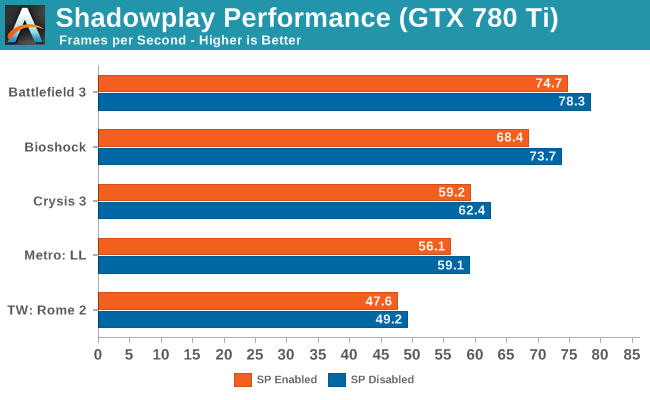
On a related note, we did some digging for a technical answer for why Shadowplay performs as well as it does, and found our answer in an excellent summary of Shadowplay by Alexey Nicolaychuk, the author of RivaTuner and its derivatives (MSI Afterburner and EVGA Precision). As it turns out, although the NVENC video encoder plays a part in that – compressing the resulting video and making the resulting stream much easier to send back to the host and store – that’s only part of the story. The rest of Shadowplay’s low overhead comes from the fact that NVIDIA also has specific hardware and API support for the fast capture of frames built into Kepler GPUs. This functionality was originally intended to facilitate GRID and game streaming, which can also be utilized for game recording (after all, what is game recording but game streaming to a file instead of another client?).
This functionality is exposed as Frame Buffer Capture (NVFBC) and Inband Frame Readback (NVIFR). NVFBC allows Shadowplay to pull finished frames straight out of the frame buffer directly at a low level, as opposed to having to traverse the graphics APIs at a high level. Meanwhile NVIFR does have operate at a slightly higher level to inject itself into the graphics API, but in doing so it gains the flexibility to capture images from render targets as opposed to just frame buffers. Based on what we’re seeing we believe that NVIDIA is using NVFBC for Shadowplay, which would be the lowest overhead option while also explaining why Shadowplay can only capture full screen games and not windowed mode games, as frame buffer capturing is only viable when a game has exclusive control over the frame buffer.
Wrapping things up, it’s clear that NVIDIA still has some polishing they can apply to Shadowplay, and while they aren’t talking about the final release this soon, as a point of reference it took about 4 months for NVIDIA’s SHIELD game streaming component to go from beta to a formal, finished release. In the interim however it’s already in a very usable state, and it should be worth keeping an eye on in the future to see what else NVIDIA does to further improve the utility.
The Test
The press drivers for the launch of the GTX 780 Ti are release 331.70, which other than formally adding support for the new card is otherwise identical to the standing 331.65 drivers.
Meanwhile on a housekeeping note, we want to quickly point out that we’ll be deviating a bit from our normal protocol and including the 290X results for both normal (quiet) and uber modes. Typically we’d only include results from the default mode in articles such as these, but since we need to cover SLI/Crossfire performance and since we didn’t have 290X CF quiet mode results for our initial 290X review, we’re throwing in both so that we can compare the GTX 780 Ti to the 290X CF without being inconsistent by suddenly switching to the lower performance quiet mode numbers. Though with that said, for the purposes of our evaluation we will be focusing almost entirely on the quiet mode numbers, given the vast difference in both performance and noise that comes from using it.
| CPU: | Intel Core i7-4960X @ 4.2GHz |
| Motherboard: | ASRock Fatal1ty X79 Professional |
| Power Supply: | Corsair AX1200i |
| Hard Disk: | Samsung SSD 840 EVO (750GB) |
| Memory: | G.Skill RipjawZ DDR3-1866 4 x 8GB (9-10-9-26) |
| Case: | NZXT Phantom 630 Windowed Edition |
| Monitor: | Asus PQ321 |
| Video Cards: |
AMD Radeon R9 290X AMD Radeon R9 290 XFX Radeon R9 280X Double Dissipation AMD Radeon HD 7990 AMD Radeon HD 7970 NVIDIA GeForce GTX Titan NVIDIA GeForce GTX 780 Ti NVIDIA GeForce GTX 780 NVIDIA GeForce GTX 770 |
| Video Drivers: |
NVIDIA Release 331.58 WHQL NVIDIA Release 331.70 Beta AMD Catalyst 13.11 Beta v1 AMD Catalyst 13.11 Beta v5 AMD Catalyst 13.11 Beta v8 |
| OS: | Windows 8.1 Pro |


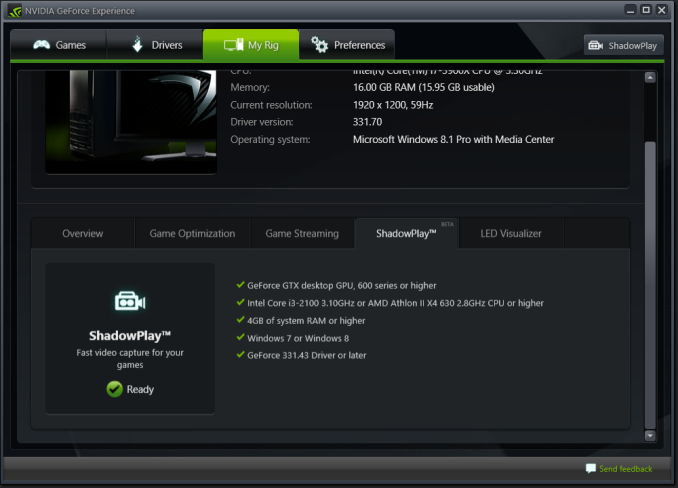
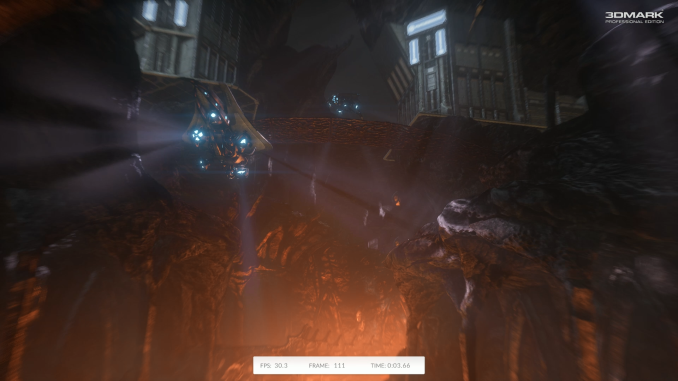

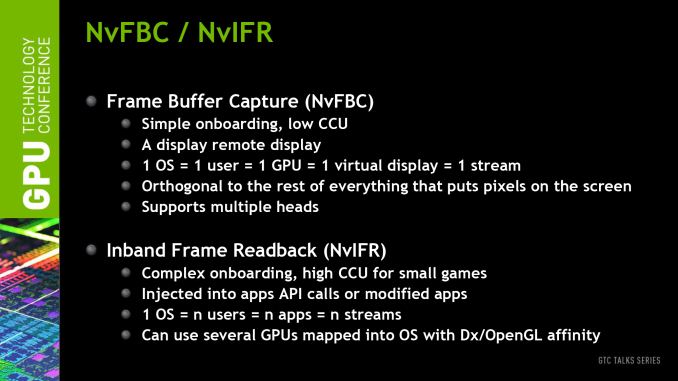














302 Comments
View All Comments
Hrel - Thursday, November 7, 2013 - link
You talk about Titan as still being plausible as a compute card, yet the AMD cards, all of them, outperform both the Titan and the 780ti. Then the 780ti out performs the Titan. Nvidia beats itself here; and AMD beats them by a massive margin. Then you throw in the fact that Nvidia is essentially not even trying to compete on a price/performance basis and all of a sudden buying an Nvidia card makes absolutely no sense.Honestly I'm happy about this. I can't buy AMD CPU's since Intel so completely wallops them; but now, finally, I have no excuse to recommend any GPU except an AMD GPU. Good on ya folks, hopefully your CPU department starts firing on all cylinders like this.
Galatian - Thursday, November 7, 2013 - link
I might not be an expert but I keep wondering what these new chips from AMD and Nvidia mean for their next generation? Clearly bringing out this full featured chips (which were once only supposed to be sold as workstation graphic chips) because 22nm keeps being delayed, will put pressure on their next chips. For example I guess the 780 chips are at the performance level Nvidia probably targeted Maxwell at. Maybe they are now pushed into releasing a full blown Maxwell chip to begin with.TheJian - Thursday, November 7, 2013 - link
This ^^^ Excellent that both have set the bar so much higher now. Realistically though it shouldn't be hard to top with the die shrink. It's just that they will not be able to give us such a gimped card at launch of 20nm for either side, saving a ton for refresh. They will be forced to give us something semi-real out of the gate :) I can't wait for maxwell 20nm. AMD will have to produce an awesome chip (like if AMD goes all out, low watts/heat/noise, 20% faster than NV basically like reverse of 780ti vs. 290x) in order for me to not want Gsync. No lag, stutter, tearing is worth a ton to me.http://wccftech.com/alleged-nvidia-maxwell-archite...
If this is true, AMD better have some good stuff up their sleeve. 6144 cuda cores? Plus all the other enhancements would be potent. I don't believe this though. Even with a die shrink it would seemingly be a HUGE die but too lazy to do that math right now to see how plausible and too far away...LOL. I could believe 4608 though with 6 GPC/18SMX/256alu's and 6144 maybe held for 16nm/14nm or something.
AngelOfTheAbyss - Thursday, November 7, 2013 - link
The difference between Titan and the 780 cards is the FP64 performance (1/3 vs 1/24 FP32),Using 64bit (double precision) floating point operations simplifies a lot of things when implementing numerical algorithms. If you use 32bit (single precision) operations, you often have to resort to some numerical skulduggery to get the desired accuracy.
TheJian - Thursday, November 7, 2013 - link
Quit looking at sites like Anandtech/Toms that don't show much CUDA perf. Quit looking at OPENCL crap on Nvidia (only a retard buys NV cards and doesn't run CUDA whenever they have a job that can be done with a CUDA app or an app that has a Cuda plugin!). None of the crap running here would be done on Titan. You wouldn't run Sony Vegas either which has tons of issues running nvidia (google it, vegas cuda - badabing bad idea to buy this app for NV go ADOBE). You'd buy an Adobe lic like the rest of the world for Photos or Video editing and you'd turn on Cuda.I'll bet EVERY penny and object I own that they will run adobe the second AMD gets OpenCL in it (which is coming)...ROFL. How much does AMD pay this site? ;) They won't run AMD vs. NV in adobe until then. Of course if someone else shows it sucks still even after optimizing the upcoming revs of adobe apps, I guess they won't do it even then ;)
Ask Anandtech why they don't run Cuda vs. AMD (in anything, amd can usually go OpenCL, DirectX or OpenGL in the same apps that use Cuda). You can run any pro app and pick luxrender for AMD and say, Octane/furryball etc for NV, yet anandtech refuses. Or just run adobe and choose cuda for nv and OpenGL for AMD. You can do Adobe tests with a freaking trial download.
http://www.tomshardware.com/reviews/best-workstati...
Look at that and the next 3 pages of cuda benchmarks and marvel as a $1000 card (titan) blows away $2000-$5000 cards (W6000 etc).
Tomshardware does the same crap as anandtech. Note they say "NOT SUPPORTED" for all cuda benchmarks. But all they have to do is use LUXRENDER for all of them and pit them head to head with Cuda. I've asked many times why they do this for all the benchmarks in their forums and they NEVER have responded...ROFL. Why do they run any OpenCL benchmark on NV at either site? Run some real stuff like Adobe AMD vs NV. The world uses premiere and photoshop (largely).
http://www.tomshardware.com/reviews/geforce-gtx-78...
marvel now as 780TI blows away the same cards $2000+ and nearly does it 2x faster than most...LOL. Understand? But why is AMD not included?
3dsmax+iray (run luxrender for AMD).
Blender 2.66 (run luxrender for AMD).
Why tomshardware why?...ROFL. They read here too ;)
OctaneRender™ for...
ArchiCAD Cinema4D, Inventor, Maya, Revit, Softimage, 3ds Max, Blender, Daz Studio, Lightwave, Poser, Rhino (sketchup & carrara, autocad etc coming soon)
Luxrender:
3dsmax, lightwave3d, blender, dazstudio, poser, cinema4d, softimage, sketchup & carrara
See how they overlap? Lux for AMD vs. Octane for NV. simple. But that would show how weak AMD is and how strong cuda is after 7yrs and billions in development ;) Heck pit any plugin you want for AMD vs. NV Cuda. Cuda is available for the top 200 apps but anandtech/tomshardware seem to be incapable of running them against each other. Well, anandtech does have an AMD portal page...LOL. :) Just saying...You should never run LUX with NVidia. Run LUX vs. Octane! Pick an app above and run both plugins against each other for AMD/NV. Simple. I understand hating on Cuda for being proprietary, but these two sites ignoring it and acting like NV is slow due to opencl is ridiculous and misleading.
Instead of the above, Anandtech runs luxmark (pick an app, use plugins instead of dumb opencl benchmark which highlights ONLY AMD), sony vegas (pit it against Adobe/Cuda/premiere easy to render the same vid in both), CLbenchmark? ROFL....How about something we can make money with instead of this fake crap? At least show the other side:
http://www.ozone3d.net/benchmarks/physx-fluidmark/
Which runs on both AMD and NV. Fluidmark:
"This benchmark exploits OpenGL for graphics acceleration and requires an OpenGL 2.0 compliant graphics card: NVIDIA GeForce 5/6/7/8/9/GTX200 (and higher), AMD/ATI Radeon 9600+, 1k/2k/3k/4k (and higher) or a S3 Graphics Chrome 400 series."
Folding@home can't make you a dime either...waste of time testing this. You like high electric bills for warm fuzzy feelings? Not me. Think some pill company will pay you to solve cancer? NOPE.
Syscompute+AMP crap home made benchmark to suit AMD? No thanks...Can't make me a dime. NOT REAL. Doesn't anyone find it strange Anandtech only runs ONE thing (sony vegas) that can actually be used to make money? And it sucks on NV when Adobe rocks. What the heck is going on here? Nobody at anandtech knows how to use Adobe products?
"Last, in our C++ AMP benchmark we see the GTX 780 Ti take the top spot for an NVIDIA card, but like so many of our earlier compute tests it will come up short versus AMD’s best cards."
LOL...Gee, maybe if you actually ran some REAL STUFF and pit AMD vs. NV (CUDA..DUH!) we'd find out some truth ;) What are you afraid of anandtech? I guess I should just paste this into every article with OpenCL benchmarks here ;) Maybe if they start losing even more traffic (down since 660ti article last sept, about in half, worse since AMD portal probably and AMD personal visit to ONLY this site...LOL), they will start telling it like it is and start running cuda vs. AMD.
FYI Titan has full DP and 6GB. Come back and say that junk when you try to render something big. Come back when anandtech starts running CUDA vs. AMD. Until then, quit drinking anandtech/amd koolaide ;)
hero4hire - Sunday, November 10, 2013 - link
Hail corporate!Cuda!!
Whatever you're getting paid needs to get cut for each ;) LOL ROFL and CAPS!!!! You're not being taken seriously when you sound like a 14 girl texting their bffs
Hail corporate!
SBTech86 - Thursday, November 7, 2013 - link
nvidia thinks we r dumbgordon151 - Thursday, November 7, 2013 - link
Would they be wrong :)?firewall597 - Thursday, November 7, 2013 - link
Did you even read this review? CF pooped all over SLI in most scenarios.jigglywiggly - Thursday, November 7, 2013 - link
why are the benchmarks not including any older cards? even a 670...